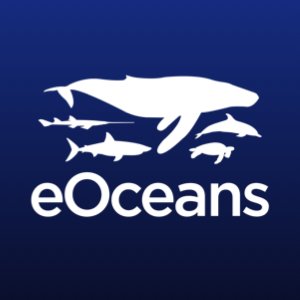Moving slowly and quietly typically helps us, ocean explorers, see more detail and capture better data for the projects we support in the eOceans platform. Some projects, like tracking ghost nets, dogs, or golf balls, aren’t as finicky as, say, tracking seahorses. So it really depends on the goals and objectives of the project that you’re helping. The key to providing good data is to pay attention to the necessary details.
Moving slowly and quietly in our ocean and aquatic spaces can improve our ability to find and detect species and issues, and help us collect better data. Photo credit: Sebastian Pena Lambarri
Contribute good data.
We all want to contribute good data to the projects we’ve joined in the eOceans platform.
But, how do we collect ‘good data’?
A teaching moment.
I used to teach third-year “Field Methods in Fish Ecology”. Unbelievably, it was the students first fish course in a four-year marine biology program. They were excited.
Students first Underwater Visual Censuses — deploying stationary point count, roving diver, and two belt-transects, instantaneous and non-instantaneous — to understand how each can be used to describe fish populations. Photo credit: Christine Ward-Paige
On the first two days of the course, we covered animal ethics, statistics, data needs, why sample, etc. We also introduced the four most common Underwater Visual Census techniques — stationary point count, roving diver, non-instantaneous belt-transect, and instantaneous belt-transect. These methods have been used since the 1950’s by scientists to count fish in the field — it’s a way of sampling without catching the fish.
The students practiced the methods on land before heading to the water.
On the third day, we went to their first lake for sampling. They suited up in thick wetsuits to perform their first Underwater Visual Censuses (UVC)— running surveys down the lake while counting and recording the fish they saw.
It was a mess.
Each year, on the first dive, the students were noisy, clumsy, measuring tapes billowing along the surface, standing on the bottom, and yelling back and forth to each other.
At lunch, they’d come to the dock and declare "There are no fish!".
Two years in a row, minutes after the students flopped on the dock in a heap of frustration, a large truck backed up and dumped 20,000 fish into the lake — it's a stocked lake!
The students looked at each other and laughed — "Are you sure there are no fish?".
On the next dive, they went in much slower and quieter, careful not to disturb the bottom — you could hear a pin drop.
Not only did they observe thousands of fish of many different species, but they also found that, along the length of the shoreline in just 3-10 feet of water depth, there were dozens of fish nests that they had completely overlooked on their first dive.
When the recreational fishers showed up a few minutes after the truck left — to fish what had been dropped off — and a dog started jumping through the lake after a ball, right through the fish nests, it was clear that these ‘ minds had been opened to what was hidden below the surface. What was in plain sight — they just needed to see it.
Happy dogs cooling off without a care of what lives below the surface. Photo credit: Jeremy Perkins.
Lesson learned.
The students learned many lessons in that moment. Not only did they need to be much slower and quieter to see the fish and observe their nesting behaviour, they quickly learned how humans — including themselves, but also the dogs and fishers — could impact their observations and the data they collected.
Contribute good data.
If you’re contributing to a project that needs precise counts of certain species, slow and quiet almost always wins. If you’re trying to see the impact of your own behaviour, or that of dogs or others, it may not matter as much.
To see as much as you can and to capture as complete a picture as possible in the eOceans app, it's best to be cautious and pay as close attention to detail as possible.
🦈🐋🦀🐙🐬🐠🐟🦦🦭🦑🦞🦐🐡
Even trained professionals performing field sampling techniques will first notice the fast moving, large animals and items — birds, seals, whales, boats. But, when we slow down and explicitly pay attention to detail, we see small, camouflaged animals — seahorses, barnacles, sand dollars, rockfish, and more.
Slowing down helps us to see better, but also helps wildlife be more comfortable to be seen.
Some animals, like pygmy seahorses, require extremely careful observers to detect them. Photo credit: Dorothea OLDANI
Depends on the goals & objectives.
Good data, does depend on the goals and objectives of the project.
A study on seahorses, epaulette sharks, or sand dollars will require you to slow down and look carefully, allowing animals to become more accustomed to your presence. It might even require some image priming — once you see one, it becomes much easier to see more.
If you are helping to find beached whales or bold basking sharks, you might need different tactics — covering more area and looking further off in the distance, for example.
Finding plastic pollution, ghost nets, oil spills, etc. may require additional sampling strategies to ensure you are paying attention and not looking past items that may be right in front of you.
Keeping the projects that you support with your observations in mind will help you to provide the data the project needs.
What will you see and log in the eOceans app today? How will that be different tomorrow, or next year? How is that different from the person that follows you?
Log observations in the eOceans mobile app to find out.
Further reading to get started:






